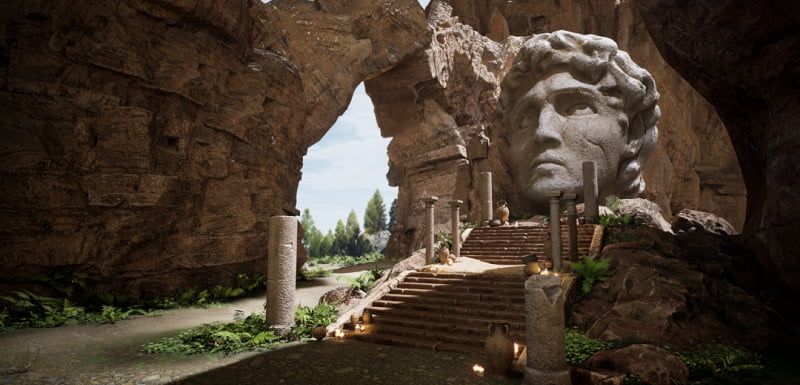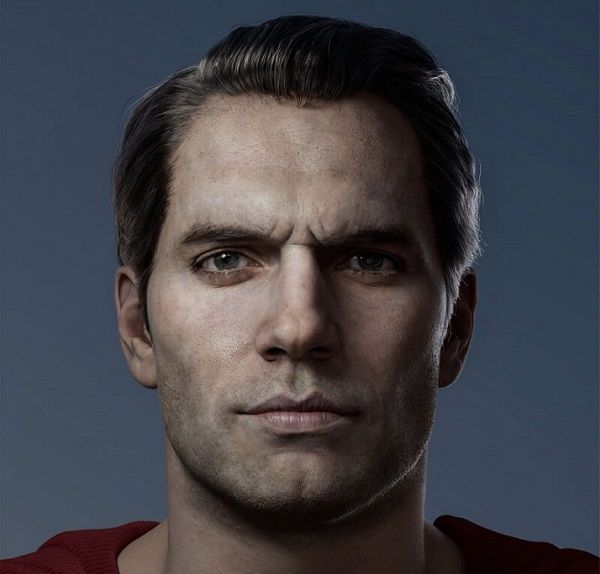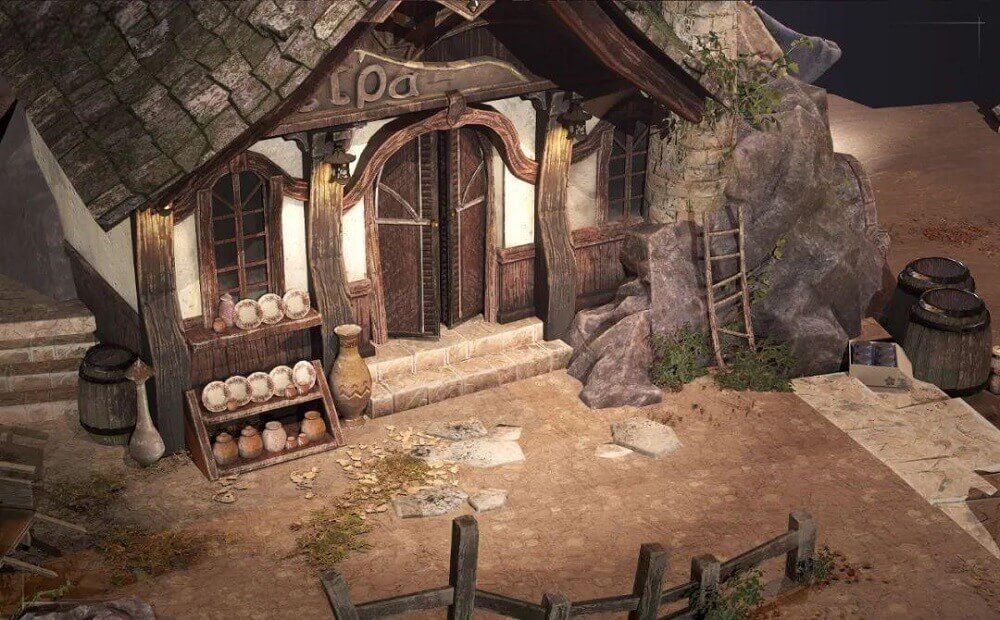3D Tutorials: How to Make a Destroyed Library in 3ds Max and Zbrush(3)

Continue the 3D Tutorials: How to Make a Destroyed Library in 3ds Max and Zbrush(1) and 3D Tutorials: How to Make a Destroyed Library in 3ds Max and Zbrush(2), the faster and easier cloud rendering services provider, Fox Renderfarm still share with you 3D Tutorials: How to Make a Destroyed Library in 3ds Max and Zbrush(3).
Visual effects
Next, I will introduce the production methods of some details of the visual effects in the scene:
- Lighting
In the middle of the scene, a beam of light illuminates from the broken glass window. The production of the beam is completed by a face with alpha, and the face itself presents an inverted V shape.

To make the light beam through an alpha transparency map, we should use photoshop to make a few vertical beams in the alpha channel, fill the RGB layer with a yellow color, and make a little gradient if you want to be richer. It’s important to pay attention to fill in the selected range of UV.

Then import this picture into Substance Painter, add a fill layer, drag this picture to the color map, turn off other channels, and turn on the opacity channel, reducing the transparency to about 0.5. If not satisfied with the color, we can modify it. Then add another fill layer, turn on the color channel, transparency channel, and luminescence channel. The transparency of the transparency channel must be adjusted to zero, and add a black mask.
- The effect of light shining through the glass on the ground
Before the light is made, the glass must be made first. The glass is also made from a face. A special method is used here. First, make a face and place it on the window as glass. Note that the glass is a separate shader.

Next, import the glass model and the high model of the window into Substance Painter; bake the glass ID separately. Click to bake and we get an ID map with window location information. Then we can draw the glass according to the window ID range!

The glass texture is also easy to make. it just needs to pay attention to the light and shade changes of the glass.

After the stained glass is made, the projection effect of the floor can be made. The projection effect of the floor is completed in Substance Painter by mapping + luminous texture.
Materials for books
The book is a structure with many copies in the scene. So when baking, the model is deliberately placed outside the scene to avoid being affected by the AO of other models.

Another advantage of putting it outside is to facilitate the adjustment. Because the books on the concept map have different colors, if we want to make books of different colors, we must create a different folder group for each book, add a black mask, add drawing options, and use the geometry filling tool to distinguish different book covers.


The material of the book is easy to make. In order to avoid the texture from being too monotonous, I searched the cover of some real books on the Internet and carried out a hand-painted copy in PS.



Rendering
Marmoset Toolbag is used for rendering. A total of three lights are used, one of which is parallel light. The light coming in from behind the window is to match the beam effect and the projection effect on the ground, so it is a fixed light.


We can increase the width under the light shape to make the shadow softer. The vegetation under the lighting is too light, so we need to add two more exhibition lights and turn on the shadow and AO to rich the vegetation. Next, we need to turn on GI and local reflections to simulate the scattering effect of light shining on the glass. We can see the scattering of the glass hitting the stone.
The final effect:


Recommended reading
Top 9 Best And Free Blender Render Farms of 2025
2024-12-30
What is Jibaro? Reveal the Story and Techniques Behind the Production of Jibaro "Love, Death & Robots"
2025-11-03
Top 10 Free And Best Cloud Rendering Services in 2025
2025-03-03
9 Best & Free 3D Rendering Software for Architects & Designers
2025-12-08
Top 8 After Effects Render Farm Recommended of 2025
2025-02-10
Easy Cel Shading Tutorial for Cartoon in Blender Within 2 Minutes
2025-11-26
Shocked! The Secret Behind Using 3D to Make 2D Animation was Revealed!
2025-02-10
How to Render High-quality Images in Blender
2024-12-04
Partners
Previous: The Zoo Crew Is Gearing Up For Halloween
Next: 3D Tutorials: How to Make a Destroyed Library in 3ds Max and Zbrush(2)
Interested







